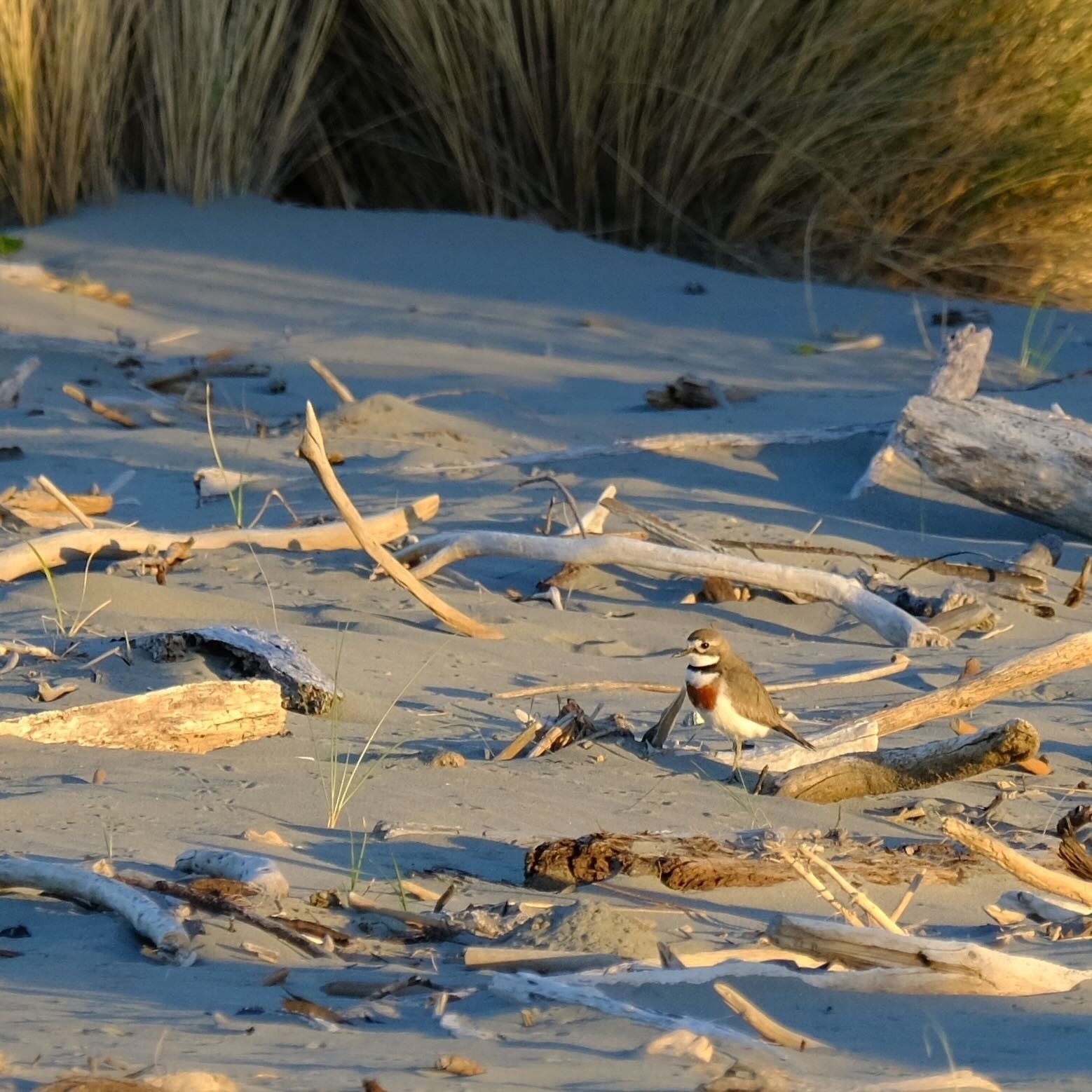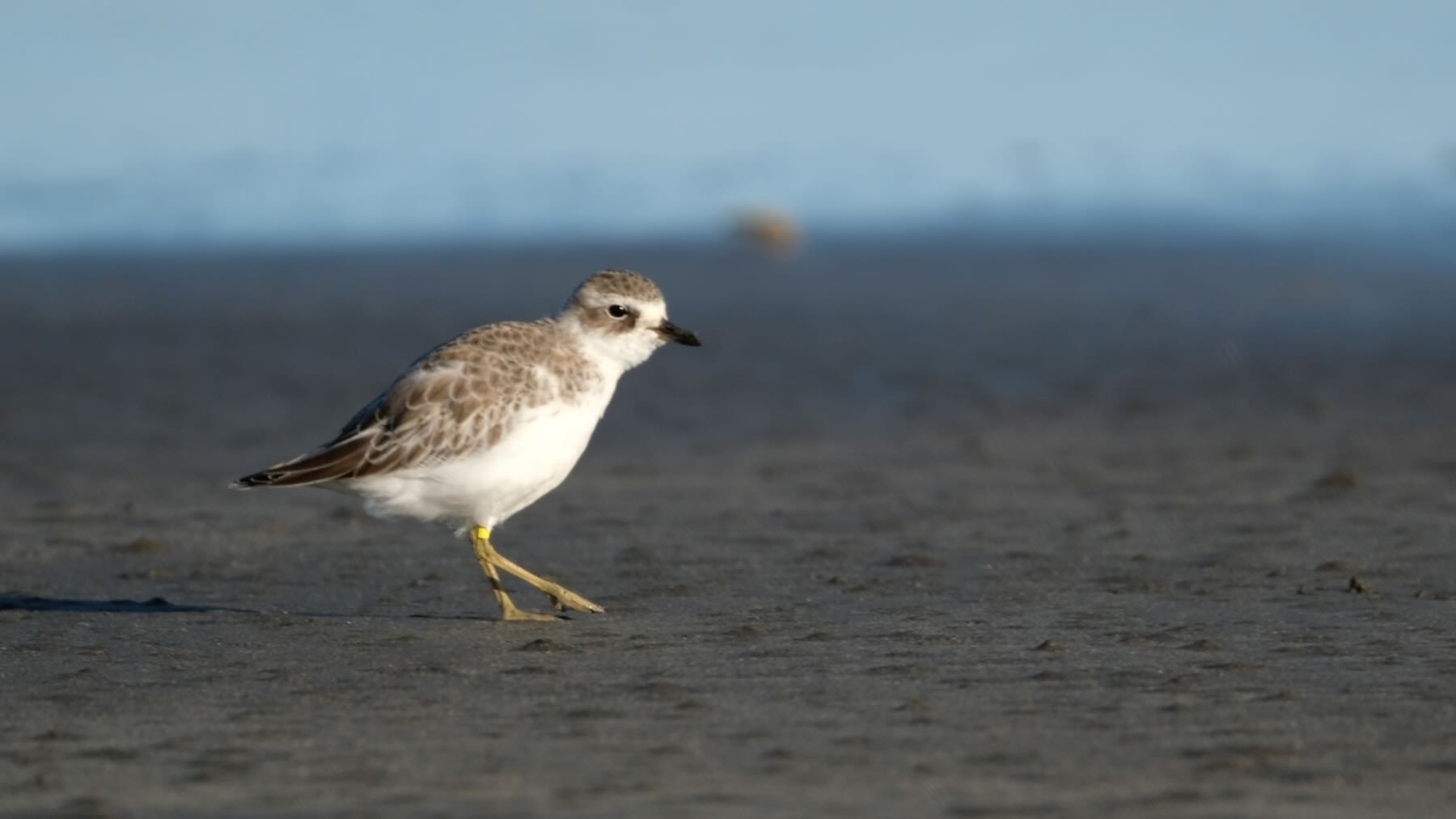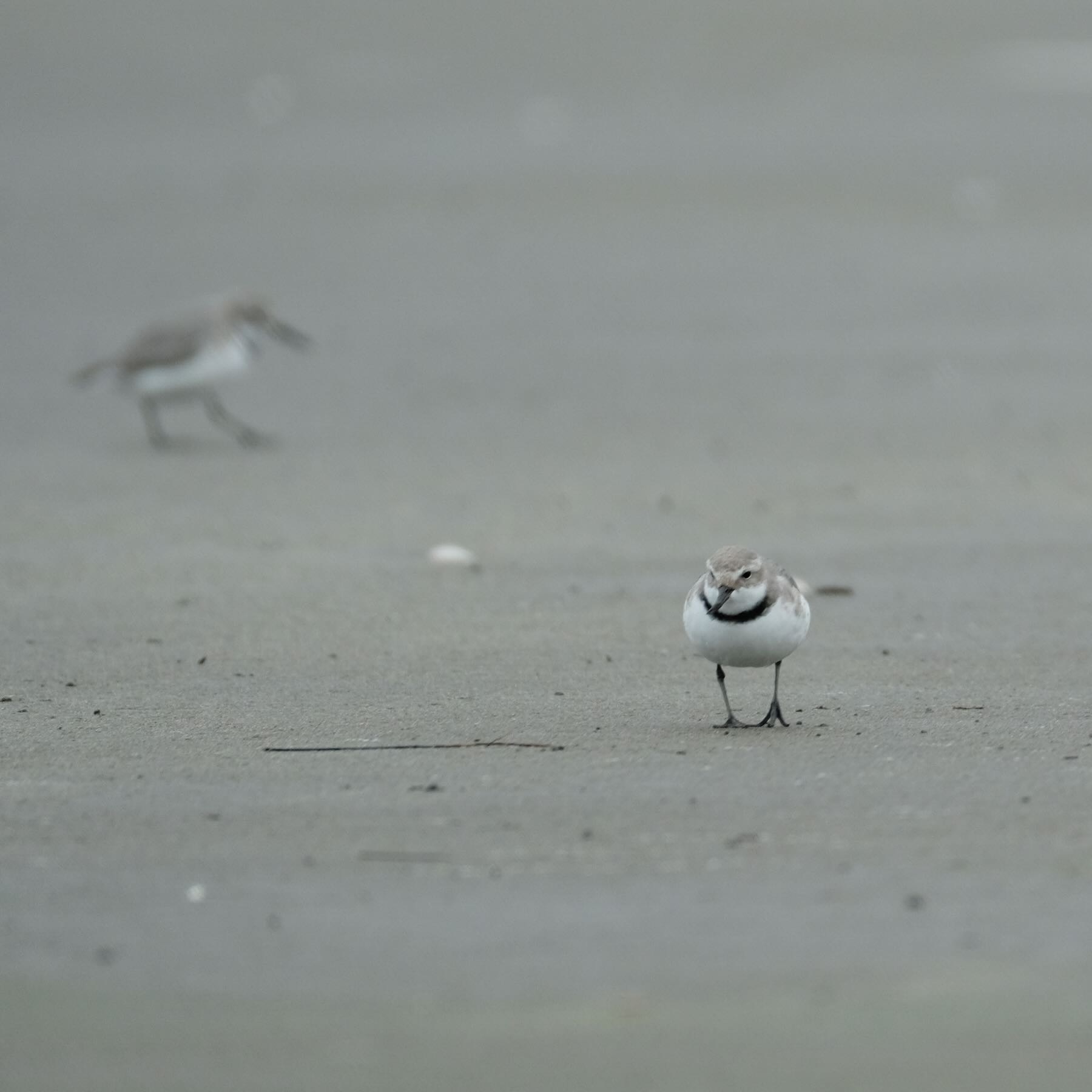One wonderful feature of spring is that the birds start coming back. on Tuesday 17 October 2023 I saw a dozen Ngutuparore | Wrybills. Back on 30 September 2023 I spotted Pohowera | Banded dotterels at the edge of the estuary. See The birds are returning to the shore.
These birds are confusing though: Banded Dotterel, Tūturiwhatu | New Zealand dotterel and Wrybill. We get them all, and they're all similar: small birds that dash about feeding in the sand.
Banded Dotterel

Info: Banded Dotterels — Length: 20 cm; Weight: 60 grams (about sparrow size). Note the stubby beak and orange patch. Endemic; Conservation status: Declining.
First eggs are laid in August to early November, in shallow scrapes in gravel, sand or soil, usually lined with tiny stones, occasionally shell. The clutch-size nearly always is three eggs, which are coloured grey to pale-green or olive with small dark spots.

NZ Dotterel

Info: NZ Dotterels — Length: 25 cm; Weight: 146 g (northern), 160 grams (southern). Note the orange chest. No stripe. Endemic; Conservation status: Recovering.
The nests of northern New Zealand dotterels are simple scrapes in the substrate, sometimes sparsely lined or decorated, often with a marker of driftwood or vegetation. Three eggs are laid, usually from August or September, and are replaced if lost. Incubation usually takes 28-30 days; the fledging period is variable, but averages about 6 weeks.
Wrybill

Info: Wrybills — Length: 20 cm; Weight: 55 grams. The beak curves to the right. Thinner stripe, no orange patch. Endemic; Conservation status: Nationally Increasing.
Territories may overlap with those of other species (e.g. banded dotterel, black-fronted tern, pied stilt), but are vigorously defended against other wrybills. The nest is a shallow scrape in the gravel, lined with many small stones. The normal clutch is 2; first clutches are laid in September or October. Replacement clutches laid after loss may occur through to January.
Next time you're on the beach take a good long look at the tiny birds you see.